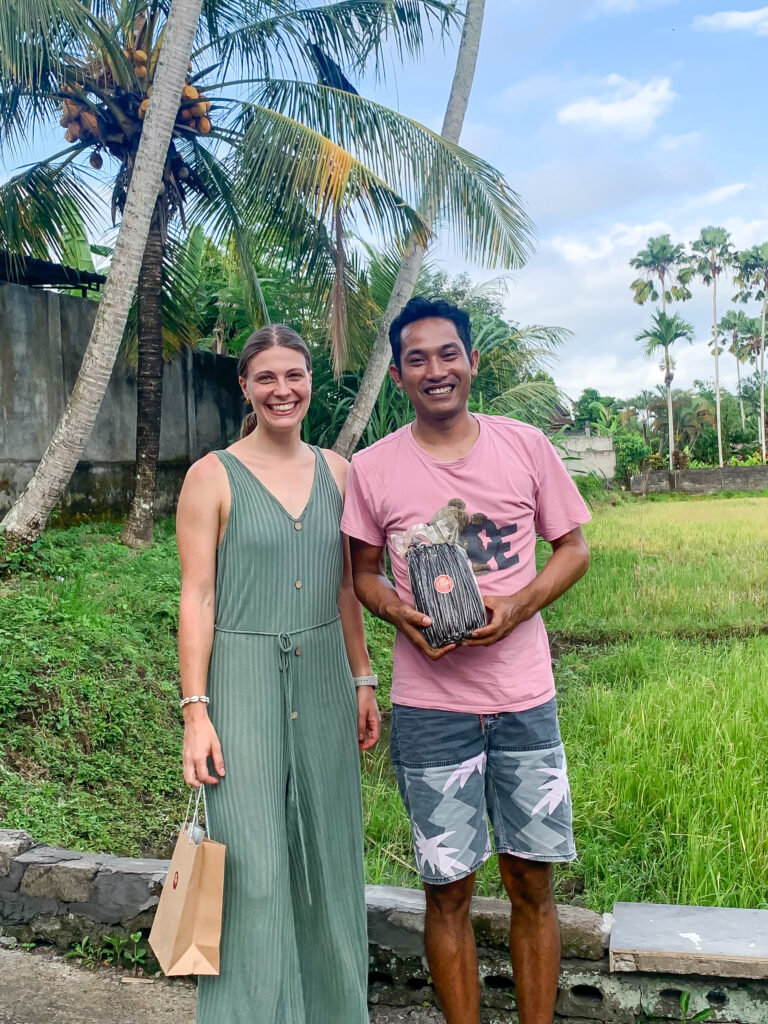During my stay in Bali I mostly spent the days driving through rice fields on our scooter, admiring the beauty of the island and on the lookout for the next Nasi Goreng. But luckily I also knew that both cocoa and vanilla are being grown on the island. As I had already had the chance to visit a cocoa plantation in Côte d’Ivoire, I thought that it was time to see how vanilla grows. But don’t worry, I did not forget about cocoa and also went to visit a local chocolate factory in Bali.
We visited Gustu, a Balinese traditional vanilla farmer. He invited us to his family’s house, where we spent a good amount of time asking loads of questions. Though I had learnt the basics about vanilla during my time at Pastry School in France, my actual knowledge was pretty limited. Later on, Gustu took us to one of his plantations so we could see how vanilla grows.
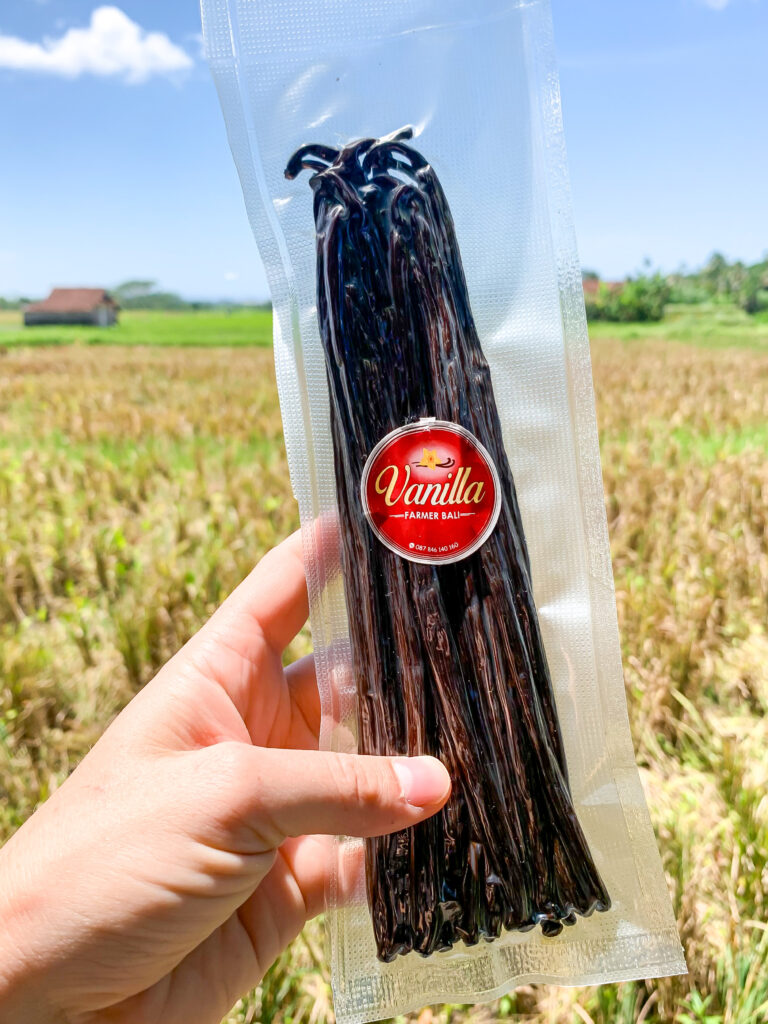
The vanilla plant is an orchid, that uses trees or tree trunks to climb up. It can get as high as 20 m and produces the first flowers at an age of 2-3 years. It is one of the most expensive spices in the world and can only be grown in specific tropical countries, such as Madagascar, Réunion, Indonesia or Mexico. It is mostly commonly used in pastries but als in perfumes and cosmetics.
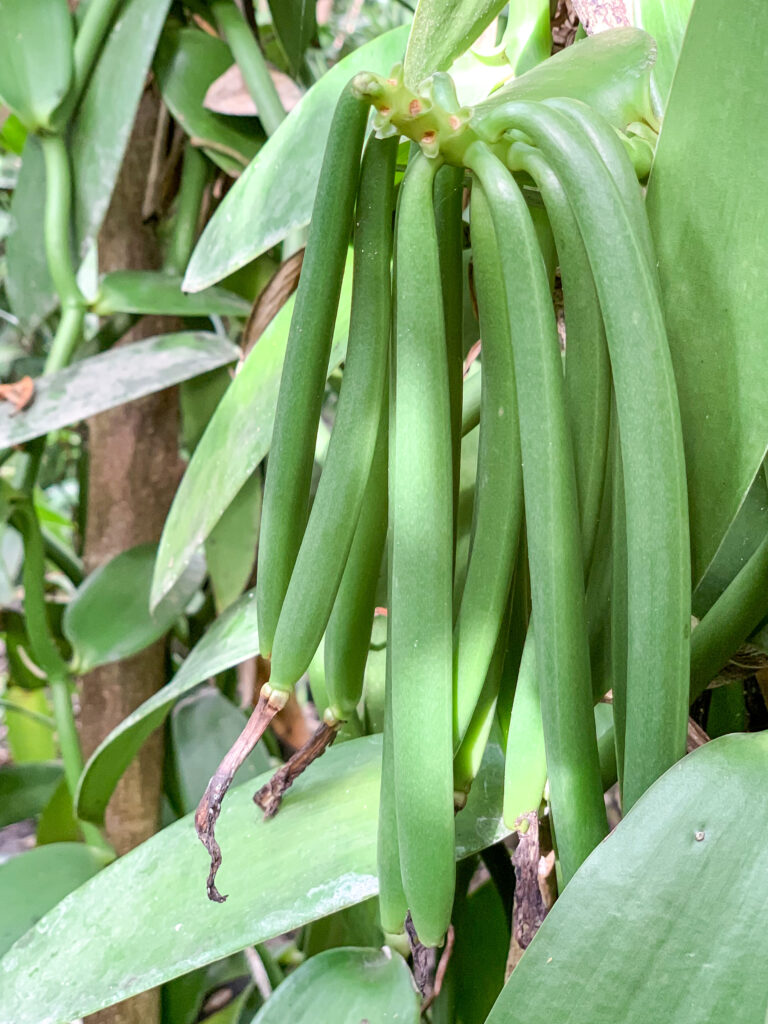
About Gustu’s Vanilla Farm in Bali
Gustu’s vanilla farm is located in Kediri, an area outside the busy tourist regions of Bali. He had taken over his father’s vanilla plants when Gustu was facing unemployment during the COVID-19 pandemic. His father had started growing vanilla in the 1990s, cultivating vanilla plants he had initially found in the forest.
Today, Gustu owns around 10.000 plants producing up to 2 tonnes of planifolia vanilla every year (pre hydration). As he told us, the production can vary every year depending on the weather conditions. A vanilla bean takes around 8-9 months to grow and needs to be picked while still green. Otherwise, the risk of the bean splitting is too high, which would diminish the bean’s quality.
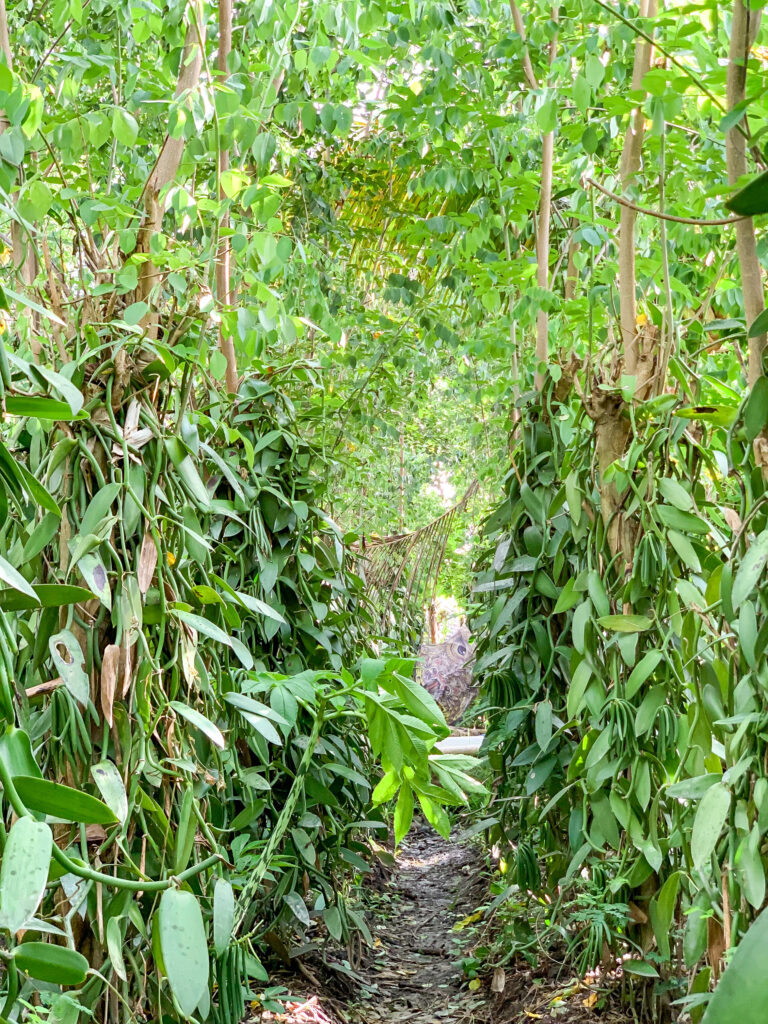
Traditional Balinese Vanilla Production
In Bali, the vanilla harvest starts in June and ends in September. When we were visiting in December, we could already see new beans grow. Unfortunately we missed the vanilla flowers, as I would have loved to see their pollination. Pollination needs to be done by hand to ensure it’s done correctly and vanilla will grow. From what Gustu had told us, natural pollination would only be 20-30% effective compared to around 95% if done by hand. Crazy, right?!
When I asked about the use of chemicals or pesticides, Gustu gave me two reasons why he doesn’t use them. Firstly, they do make the vanilla plant grow faster, but it also means that it will be less productive faster. Traditionally, a new vanilla plant takes around 2-2,5 years to grow until it develops the first flowers. So it takes quite a while and some good care until it generates income. Secondly, he told me that the prices for pesticides are simply to high given his production quantity.
Steps post harvest
-
- Once the vanilla is harvested, the green beans will be washed and “cooked” in hot water for around 3 minutes. This stops the ripening of the bean.
- Afterwards, the beans are kept in a warm box for two days, where fermentation changes the bean’s colour from green to brown.
- The next step is to dry the vanilla in the sun, usually from 9 am to around noon for one month and twenty days. Yes, Gustu was really specific about that. Afterwards, the beans are kept in a container and laid out into the sun again the next day.
- During this phase the vanilla develops their aromas and the vanillin, which is mostly responsible for their taste.
- Once this procedure is over, the vanilla beans are sorted by length and colour, weighed and packaged.
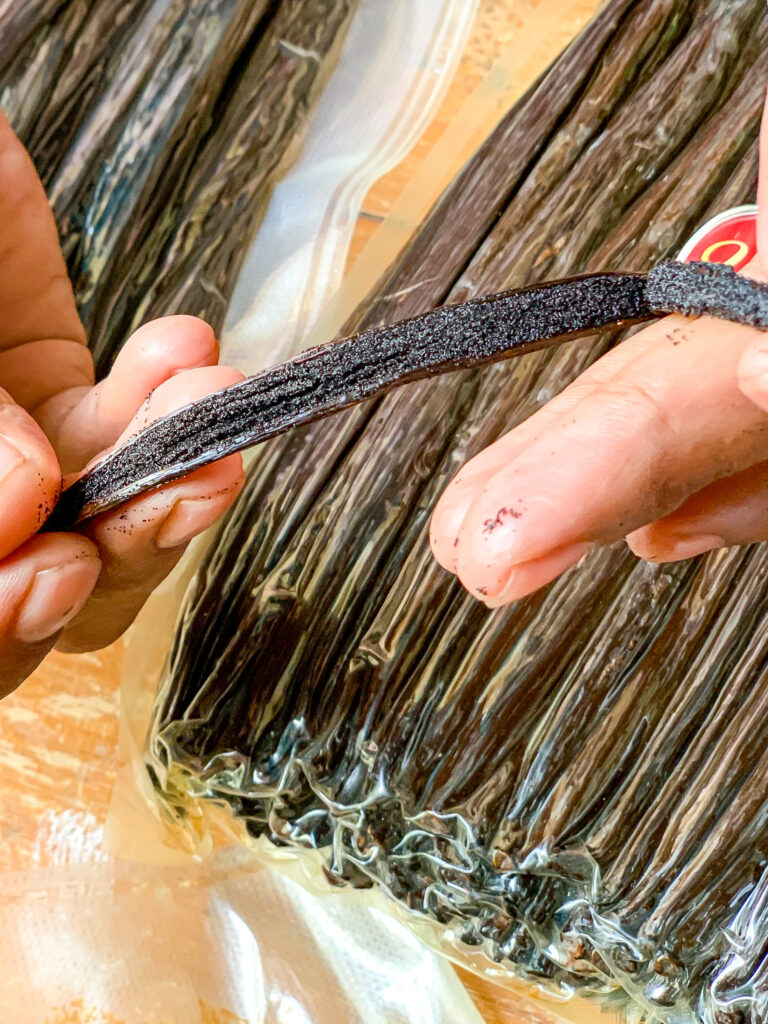
Selling vanilla as a traditional farmer
Honestly, I had thought that it must be pretty easy to sell vanilla. It is one of my favourite spices and I know how thought after and expensive it is to buy. From what Gustu told me of his experience is that selling vanilla in Indonesia is almost impossible. It is not a spice that is traditionally used in Indonesian or Balinese cooking. Therefore, he almost entirely relies on exportation. He exports his vanilla to different countries around the globe, mostly bakers like me or perfume makers.
A meeting beyond vanilla
Learning first hand from someone who spends his entire day committed to the production of vanilla was inspiring. Not only did I learn so much more about vanilla, but I truly enjoyed meeting and talking to Gustu. He shared his knowledge without hesitation, was curious about my experience about what to do with used vanilla beans and answered all our questions with patience. Of course, I had to get some of his vanilla and ended up getting some Tahitian vanilla on top. I can’t wait to experiment with it, don’t worry, I’ll share some delicious vanilla recipes with you!
Now I understand better, why vanilla is one of the most expensive spices out there. In case you head to Bali and want to experience Gustu’s vanilla plantation yourself, you can simply contact him on WhatsApp: +62 878 4614 0160 and he will be happy to chat and show you around! You can even get Nasi Goreng after at their family’s local Warung to make the day even more perfect.
